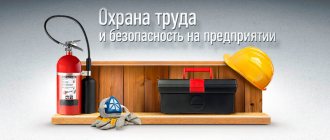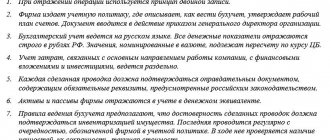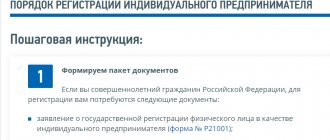Regulatory requirements
A medical examination is required by law.
List of regulatory documents on the basis of which the inspection is carried out:
- Labor legislation. The requirements of the law determine that every worker must undergo medical examination by specialists. The same document explains what the consequences will be if the event is not completed.
- The labor protection rules of any industry also require a medical examination.
- The order of the Ministry of Health specifies in what cases and under what factors a medical examination of employees is carried out.
These are the main documents according to which the inspection is carried out. Also regulating the passage will be a card for a special assessment of the conditions of the labor process. The map is drawn up by an expert commission, it sets out the reasons for the passage.
Order of conduct
Responsibility for organizing a medical examination lies with the director of the company. During it, workers visit several doctors, undergo tests, etc. The exact list depends on the types of activities and harmful production factors. The commission of doctors who conduct the examination is formed by the medical center with which the contract is concluded. It usually includes an occupational pathologist and other specialists (detailed information about the list of doctors is contained in the Order of the Ministry of Health dated April 12, 2011 No. 302n).
In short, the procedure for conducting periodic medical examinations of employees is as follows:
Step 1. Conclude an agreement
First of all, the employer enters into a contract with the medical center.
Step 2. Making a list
There are two lists: contingent and by name. The contingent (list of positions and works taking into account the requirements of Order No. 302n, with what frequency to undergo control) is provided to the territorial department of Rospotrebnadzor within ten days. On its basis, a list of names (a list of specific people) is made, which is sent by the employer to the medical organization no later than 2 months before the start date of the examination agreed upon with the medical center. The employer is not obliged to indicate in these lists which doctors and tests are needed, but in the lists he clarifies the points of Order No. 302n, which oblige a medical examination.
Read more: How to make a list of people subject to periodic medical examinations
Step 3. Making a plan
Based on the list of names (within 10 days from the date of its receipt, but no later than 14 days before the agreed date of examination), the medical center draws up a calendar plan for conducting periodic examinations.
Step 4. Prepare the order
The employer issues an order to send for a medical examination and the order of its completion. Persons sent for medical examination must familiarize themselves with the order at least 10 days before it takes place.
Read more: How to draw up an order for medical workers to undergo a medical examination
Step 5. Issue directions
After this, employees should be given directions for a medical examination. There is no approved form for this document, so it is drawn up in any form.
Read more: We issue a referral for periodic medical examination
Step 6. Workers undergo inspection
With a referral in hand, employees come to the medical institution with which the contract is concluded within the time period specified in the document. Be sure to have a passport and a referral from your employer with you.
During their stay at the medical center, workers retain their average earnings. If an employee refuses to be tested, the director will have to suspend him from work and not pay him a salary until the subordinate passes the test. If the inspection is missed due to the fault of the employer or due to factors beyond the control of the employee or the head of the company, non-admission to perform duties is considered idle time and is paid in the amount of 2/3 of the worker’s average salary.
Upon completion of the event, the medical institution draws up a final report (within 30 days). A certified document signed by the head of the medical center and the enterprise is sent to the territorial department of Rospotrebnadzor for approval.
Read more: Why do you need a final medical examination report?
Unscheduled, extraordinary
To maintain safety when performing work, the legislation provides for unscheduled and extraordinary inspections. The medical examination includes a set of measures aimed at identifying pathological abnormalities. Unscheduled medical examinations exist, and an employee can undergo them in advance, regardless of the schedule.
The right to referral is also granted to the employer.
A medical examination may be carried out unscheduled.
This happens in cases where:
- the employee’s health has deteriorated and he is unable to work;
- if there is a suspicion of an occupational disease;
- there is a need to confirm your health status;
- when extraordinary medical examinations are carried out;
- for those working in the field of trade and food;
- health workers;
- employees of child care institutions;
- drivers.
If there are no recommendations from management to undergo the examination, then the employer has the right to send the employee to undergo it himself.
Based on the completed examination, the enterprise administration decides whether to allow the employee to perform production tasks.
If health does not allow working under these conditions, then the company management may remove the employee from work.
Preventive
An important solution is preventive examination of citizens. If you undergo a medical examination in a timely manner, you can avoid many problems. When diseases are detected in the early stages, they can always be prevented.
Objectives:
- detection of viral pathologies;
- determination of health group;
- providing advice on health issues;
- consultation on serious abnormalities, including cardiovascular diseases;
- An observation group for clinical examination is established, including for healthy people.
The event is held once every 2 years. If a citizen goes for a medical examination, then he does not need to go for a medical examination. If a special assessment of the conditions of the labor process identifies dangerous or harmful factors during a medical examination, then the management of the organization takes this information into account.
What is the frequency of inspections?
Conducting a medical examination is not necessary once a year; this requirement is interpreted by the regulations of the Ministry of Health.
Compulsory examinations are carried out according to:
- For those working with food products. Twice a year it is required to determine the presence of viral infections and conduct tests of biomaterial for staphylococcus. Once a year, an FLG, tests for helminths, and consultations with doctors are required.
- For employees of children's institutions, the presence of infectious diseases and testing for the presence of bacteria are determined. This event is performed once a quarter.
- If this is an employee from a pharmacy, then once a year it is required to undergo a dermatovenereologist, undergo FLG and submit biomaterial for analysis.
- Employees in the public utilities sector are required to undergo a routine medical examination twice a year. Diphtheria vaccination is given.
Why send workers for a medical examination?
The term “medical examination” in the professional sphere has replaced the concept of “medical examination”. In fact, both of these denote a set of measures to study the employee’s health, identify possible pathologies and prevent them. It is the physical condition of the employee that will determine how suitable he is for performing certain job duties. To understand whether a subordinate’s health corresponds to his position and paid activities, the employer sends his company’s employees for a mandatory medical examination.
First of all, periodic medical examination is necessary for workers in professions associated with danger: firefighters, rescuers, miners. The category of hazardous industries also includes enterprises whose activities involve chemical mixtures, biological matter, allergens, toxins, and ultraviolet radiation.
The health status of employees of such companies must be monitored in order to avoid a sharp deterioration and prevent loss of ability to work or possible work-related injuries. If production employees are affected by at least one of the factors, a medical examination should be organized once a year or more often.
Workers in the food sector, trade or public catering organizations, teachers in school and preschool institutions undergo a medical examination in order to preserve their own health and the safety of those with whom the employee comes into contact. In addition, the goals of medical examinations include monitoring the health dynamics of employees and preventing the development of diseases associated with professional activities.
Control of this aspect of labor is legally assigned to the head of the company. It is he who is required to determine how often employees must undergo mandatory medical examinations, whether a medical examination is necessary for the candidate before taking office, and other organizational issues.
Registration of results
Based on the results of medical examinations, reports are drawn up. Information contained in the documents:
- The number of workers who must attend the event. The number of women is indicated separately.
- Who passed the medical examination and who did not? The number and information are indicated as a percentage.
- Employees who are and are not allowed to work, including those who require additional examination.
- Who has been diagnosed with occupational pathologies?
- Who needs treatment in dispensaries.
The act is signed by medical specialists and certified with seals. You have 30 days to complete the document. The act is executed in three copies: one is transferred to the employer, the second remains in the institution, and the third is sent to the Social Insurance Fund.
How is a referral for a preliminary medical examination issued?
A referral for a medical examination on the employer’s letterhead is given to the specialist applying for a job in person against signature. If an employee does not pass or refuses to undergo a medical examination, the employer is obliged not to allow him to perform his job duties or to suspend him from work (paragraph 13, part 2, article 212 and part 1, article 76 of the Labor Code of the Russian Federation).
The medical examination is considered completed if the employee has passed all the doctors, and all planned laboratory diagnostic tests have been carried out. Based on the results of the examination, the person applying for work is given a conclusion.
The conclusion is drawn up in two copies. One is given to the enterprise, and the second copy of the report remains in the medical institution and is attached to the outpatient medical record, which is created immediately after presentation of the referral for a medical examination.
Who needs to undergo a medical examination?
A medical examination is required for those employees whose activities involve harmful factors. The presence of hazards is confirmed by a special assessment of the working conditions.
List of specialties for completing MO:
- work at height;
- if the work activity is carried out in the catering sector;
- when raising children;
- when caring for sick people;
- if labor is carried out on farms;
- hotel business;
- in spas and hotels;
- at pharmaceutical industry enterprises;
- The event is held starting from the age of 21.
If the medical examination is not passed
When a medical examination is not passed, this can lead to negative consequences:
- The employee should not be allowed to perform tasks.
- If the employee has been allowed to work, then responsibility is transferred to the manager of the facility.
- If a violation is detected due to failure to pass a medical examination, the labor inspector will impose a fine.
- If an employee is diagnosed with an occupational disease and is still involved in work, then management will be responsible.
- Under any circumstances, failure to undergo medical examination is a violation of regulations, and this entails liability.
Organization of medical examination
At enterprises, medical examination is organized as follows:
- Local regulations on the passage are being developed. The documents stipulate when the survey is carried out, including the time for submitting lists.
- An administrative document on the medical examination is being prepared.
- Control over the passage is assigned to the official.
- Directions are issued to each employee.
- A medical examination is organized on site or in a clinic.
- Specialists inspect workers. If a suspicion of an occupational disease is detected, the employee is examined thoroughly.
- An act of holding the event is being prepared.
- Employees are issued health passports.
Rehabilitation measures for employees are controlled by officials.
Types of medical examinations for workers
In accordance with the norms of labor legislation, namely stat. 212 of the Labor Code of the Russian Federation, the employer is obliged to ensure compliance with safe working conditions and create a labor protection system at the enterprise. In particular, this also applies to organizing medical examinations for various purposes at our own expense. At the same time, it is prohibited to allow employees to perform their work duties without undergoing medical examinations or psychiatric examinations, as well as in the presence of appropriate contraindications.
Such therapeutic and preventive measures (TPM) are carried out in order to preserve the health and life of personnel in accordance with labor protection standards. The order, frequency and document flow of actions depend on the purpose and purpose of the CVL. So, currently there are the following types of inspections.
Types of medical examinations according to Federal Law No. 323 of November 21, 2011:
- Preliminary tests are carried out at the stage of a specialist’s entry into official work in order to establish the actual state of a person’s health. Such measures are mandatory if workers of certain specialties are employed, for example, military personnel or persons applying for work in dangerous/harmful working conditions. Among the list of documents received from the personnel officer is a medical report. And to undergo this type of inspection, you will need a referral from the employer indicating the hazard class. If an individual refuses to undergo inspection, the employer does not have the right to hire him for a position, since labor safety requirements are not met in this case. In addition, preliminary examinations are required when applying for training in accordance with Part 7 of Art. 55 Federal Law No. 273 dated December 29, 2012
- Periodic – carried out while employees are performing their job duties, that is, directly during employment with the employer. The main goal of such PMPs is to establish the compliance of the specialist’s health status with the position held and the functions performed. It is with the help of periodic examinations that it is possible to promptly detect the onset of a disease, detect early signs of the harmful effects of working conditions, form risk groups, and detect those diseases that are medical contraindications and are reasons for removal from a position. In addition, based on the conclusions of periodic examinations, doctors prescribe rehabilitation treatment measures aimed at restoring the employee’s ability to work and maintaining his health. The frequency of examination is regulated at the legislative level and depends on the nature of employment and the position held. Thus, individual categories are listed in the stat. 213 TK. These are, for example, workers in the transport sector and food industry, employees of catering and child care institutions, etc.
- Extraordinary or unscheduled - such inspections are performed outside the generally established frequency. Mainly, the reason for such events may be the personal requests of employees or the decision of the employer based on available medical information. conclusions to establish the presence of the disease. A one-time extraordinary examination is mandatory as prescribed by the territorial bodies of Rospotrebnadzor of the Russian Federation in the event of an unfavorable epidemiological or sanitary situation. For example, during poisonings in schools.
- Pre-shift/post-shift, pre-trip/post-trip – certain categories of work require more frequent inspections than in general cases. Thus, drivers are required to undergo a daily examination before being allowed to drive a vehicle to identify the presence of diseases and determine their state of health. Such pre-shift or pre-trip inspections are permanent in nature and give grounds for responsible persons to make a conclusion about admission to the current shift. This includes assessing the possibility of toxic, alcohol or drug intoxication. After a shift/flight, at the end of the working day, a similar inspection is performed with mandatory recording of the influence of harmful production factors of working conditions on a person’s health.
Note! Some specialists may have their own frequency of inspections depending on working conditions - the list of dangerous/harmful factors is regulated in Order No. 302n.







